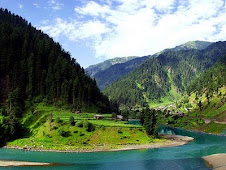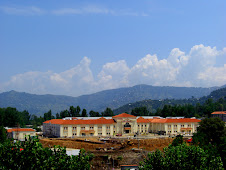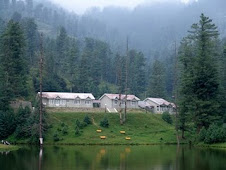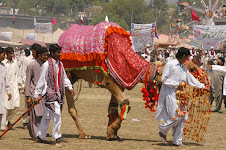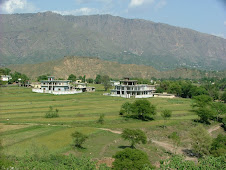
Friday, February 26, 2010
Tuesday, February 23, 2010
Kashmir the Beautiful
style="font-weight:bold;">History of Kashmir
According to a legend, the great sage Kashyap drained a lake and the Brahmins then inhabited it. The place came to be known as Kashmir. A land of turbulent past and present, the missionaries of Emperor Ashoka introduced the Buddhism in the region. The religion flourished under the rule of Kushan in 2nd Century. However, Hinduism continued to be the dominant religion of the region for many centuries. In the 7th Century, Durlabhavarrdhana founded the Karkota dynasty, which was replaced by Utpalas in 855 AD, which were succeeded by the Tantrins, Yaskaras, Guptas abd Loharas ruled respectively. The first Muslim who reigned Kashmir was Shams-ud-Din who replaced the last Hindu king, Udiana Deva in 1346. Moghul emperor Akbar conquered it in 1586 and thus Kashmir became a part of his vast empire.
1757 saw the victory of Ahmed Shah Durrani and Kashmir went out to Pakistan until 1819, when Ranjit Singh won it again to annex it to his Sikh empire. In 1846, the British defeated the Sikhs and sold it to Ghulab Singh of Jammu for Rs 7.5 million under the Treaty of Amritsar and gave him the status of an independent princely ruler of Kashmir. He conquered Ladakh and added it to his dominion. Maharaja Ghulab Singh died in 1857 and was succeeded by Maharaja Rambir Singh. Maharaja Partab Singh and Maharaja Hari Singh ruled over Kashmir in succession.
The India-Pakistan partition took place during the reign of Hari Singh in 1947 and the rulers of princely states were given the choice to freely accede to either India or Pakistan or to remain independent. However, since the Maharaja of Kashmir was a Hindu, he chose to join India despite the majority of the Muslim population in his dominion. However, since then there have been controversies over the decision and Pakistan claims that the decision was partial and the region should be a part of its dominion.
According to a legend, the great sage Kashyap drained a lake and the Brahmins then inhabited it. The place came to be known as Kashmir. A land of turbulent past and present, the missionaries of Emperor Ashoka introduced the Buddhism in the region. The religion flourished under the rule of Kushan in 2nd Century. However, Hinduism continued to be the dominant religion of the region for many centuries. In the 7th Century, Durlabhavarrdhana founded the Karkota dynasty, which was replaced by Utpalas in 855 AD, which were succeeded by the Tantrins, Yaskaras, Guptas abd Loharas ruled respectively. The first Muslim who reigned Kashmir was Shams-ud-Din who replaced the last Hindu king, Udiana Deva in 1346. Moghul emperor Akbar conquered it in 1586 and thus Kashmir became a part of his vast empire.
1757 saw the victory of Ahmed Shah Durrani and Kashmir went out to Pakistan until 1819, when Ranjit Singh won it again to annex it to his Sikh empire. In 1846, the British defeated the Sikhs and sold it to Ghulab Singh of Jammu for Rs 7.5 million under the Treaty of Amritsar and gave him the status of an independent princely ruler of Kashmir. He conquered Ladakh and added it to his dominion. Maharaja Ghulab Singh died in 1857 and was succeeded by Maharaja Rambir Singh. Maharaja Partab Singh and Maharaja Hari Singh ruled over Kashmir in succession.
The India-Pakistan partition took place during the reign of Hari Singh in 1947 and the rulers of princely states were given the choice to freely accede to either India or Pakistan or to remain independent. However, since the Maharaja of Kashmir was a Hindu, he chose to join India despite the majority of the Muslim population in his dominion. However, since then there have been controversies over the decision and Pakistan claims that the decision was partial and the region should be a part of its dominion.
Monday, February 22, 2010

People of Kashmir
According to historians, the ancestors of Kashmiris are early immigrants from India proper. With the spread of Buddhism, many scholars came to Kashmir from far-off lands for research and study. The contact of Kashmiris with the Roman, Greek and Persian civilizations resulted into a fusion of cultures. Most of the people claim their descent from the Indo-Aryan stock but one can easily find people belonging to diverse and different races inhabiting Kashmir with distinct looks, dresses, food habits, customs, speech and traditions.
Kashmiris have made remarkable contributions to the arts of story-telling and mystical poetry,
According to historians, the ancestors of Kashmiris are early immigrants from India proper. With the spread of Buddhism, many scholars came to Kashmir from far-off lands for research and study. The contact of Kashmiris with the Roman, Greek and Persian civilizations resulted into a fusion of cultures. Most of the people claim their descent from the Indo-Aryan stock but one can easily find people belonging to diverse and different races inhabiting Kashmir with distinct looks, dresses, food habits, customs, speech and traditions.
Kashmiris have made remarkable contributions to the arts of story-telling and mystical poetry,
Handicrafts of Kashmir
Jammu and Kashmir is not only home to the vast cultural and ethnic diversity but also the myriad arts and crafts that have been carefully nurtured for the centuries. A variety of motifs, techniques and crafts flourished in the land as the people from different regions flocked through this beautiful place and many of the skilled craftsmen decided to settle amidst its charming abundance of natural beauty.
Carpet
Kashmiri carpets are world renowned for two things - they are hand made and they are always knotted, never tufted. The yarn used normally is silk, wool or silk and wool. Woolen carpets always have a cotton base while silk usually have cotton base.
.
Namdas
Far less expensive are these colorful floor coverings made from woolen and cotton fiber, which has been manually pressed into shape. Prices vary with the percentage of wool - a Namda containing 80% wool being more expensive than one containing 20% wool. Chain stitch embroidery in woolen and cotton thread is worked on these rugs.
Shawls
There are three fibers from which the Kashmiri shawls are made - Wool, Pashmina and Shahtoosh. Woolen shawls being are the cheapest while the Shahtoosh are the most expensive ones. Woolen shawls are popular because of the embroidery, worked on them, which is a specialty to Kashmir. Both embroidery and the type of wool used causes differences in price.
Subscribe to:
Comments (Atom)

